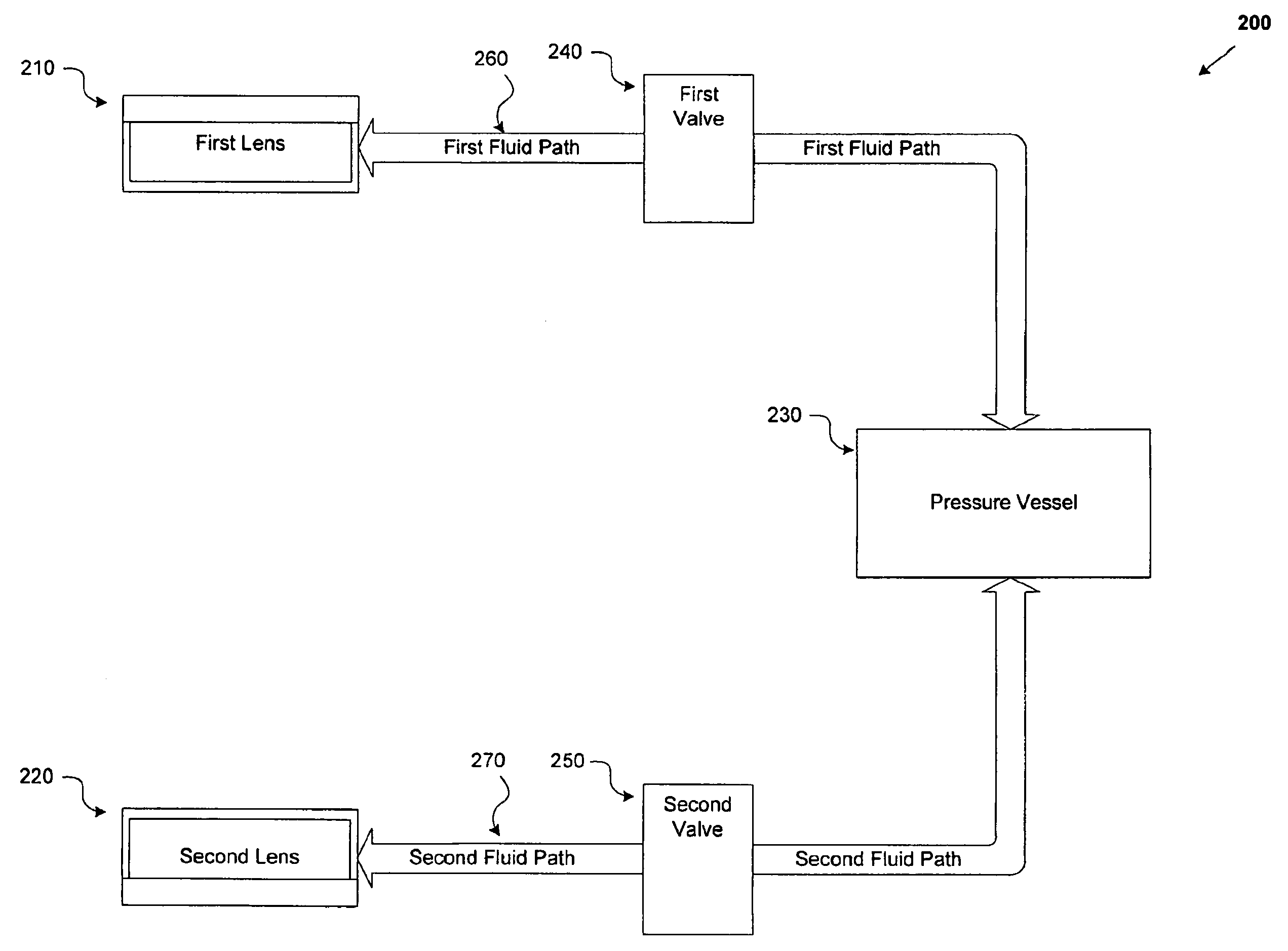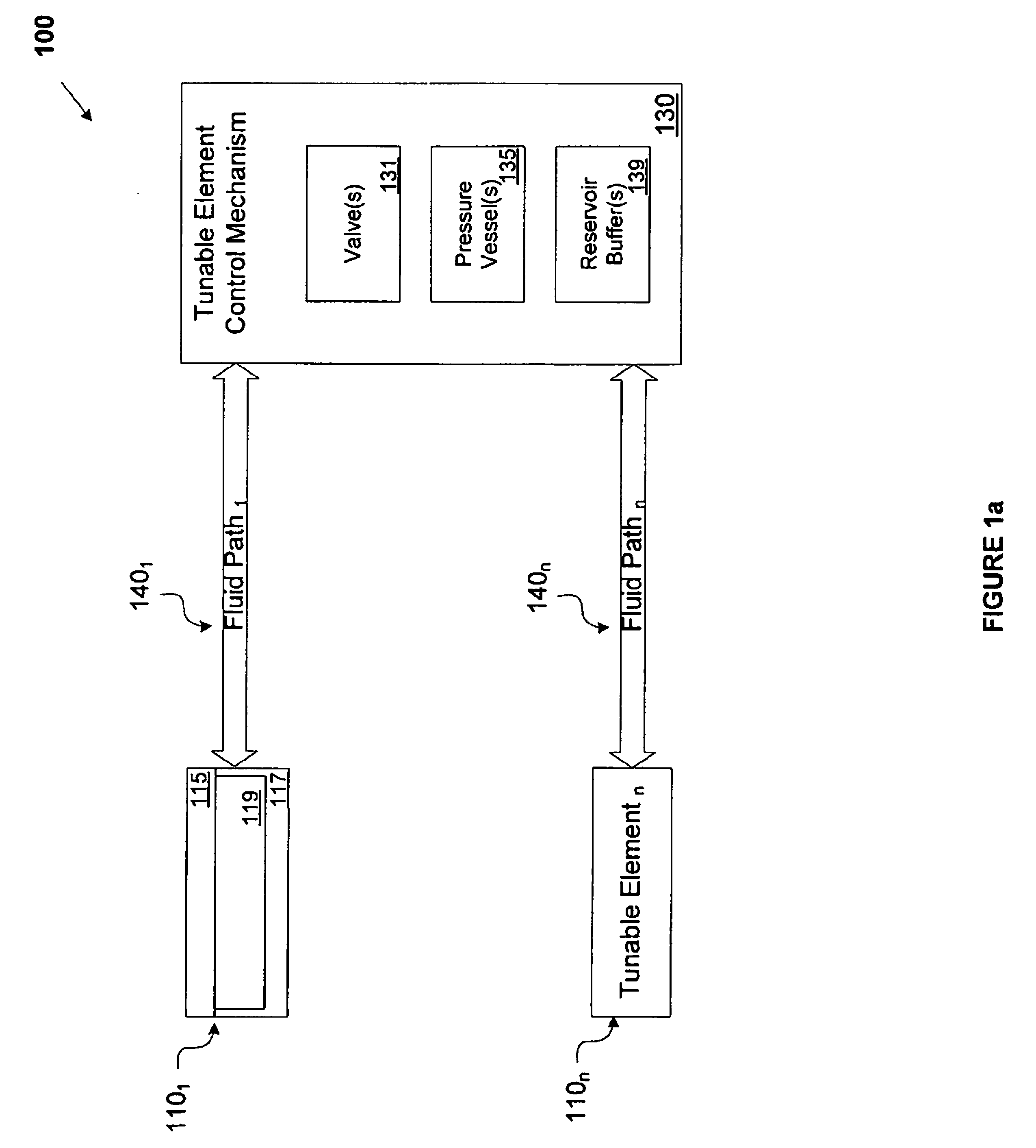Systems and methods for effecting zoom and focus using fluidic adaptive lenses
a technology of adaptive lenses and fluidic lenses, applied in the field of fluid adaptive lens systems and methods, can solve the problems of complicated and expensive mechanical and/or other components and techniques that must be employed to achieve the desired effect, and the conventional system with zooming and focusing capabilities is typically more expensive and often more bulky than the system without such capabilities, and requires a mechanical system that is complicated, slow, bulky and expensiv
- Summary
- Abstract
- Description
- Claims
- Application Information
AI Technical Summary
Benefits of technology
Problems solved by technology
Method used
Image
Examples
Embodiment Construction
[0046]Attention is drawn to FIG. 1a, which depicts a fluidic lens apparatus 100 in accordance with an exemplary embodiment of the invention. As shown, the apparatus 100 comprises n tunable elements 110 including, for example, a tunable element 1101. One of skill in the art will appreciate that the apparatus 100 can include any number of tunable elements 110 (denoted herein as “n tunable elements 110”). The apparatus 100 also comprises at least one tunable element control mechanism 130. In an exemplary embodiment, as shown in FIG. 1a, the n tunable elements 110 and the tunable element control mechanism 130 are in fluid communication with each other via n fluid pathways 140.
[0047]The tunable element 1101, for example, comprises at least one lens membrane 115 coupled to at least one lens chamber 117. The coupling of the lens membrane 115 to the lens chamber 117 creates a cavity 119. The cavity 119 is filled with a fluidic medium (also referred to as “fluid” herein). One of skill in the...
PUM
 Login to View More
Login to View More Abstract
Description
Claims
Application Information
 Login to View More
Login to View More - R&D
- Intellectual Property
- Life Sciences
- Materials
- Tech Scout
- Unparalleled Data Quality
- Higher Quality Content
- 60% Fewer Hallucinations
Browse by: Latest US Patents, China's latest patents, Technical Efficacy Thesaurus, Application Domain, Technology Topic, Popular Technical Reports.
© 2025 PatSnap. All rights reserved.Legal|Privacy policy|Modern Slavery Act Transparency Statement|Sitemap|About US| Contact US: help@patsnap.com



